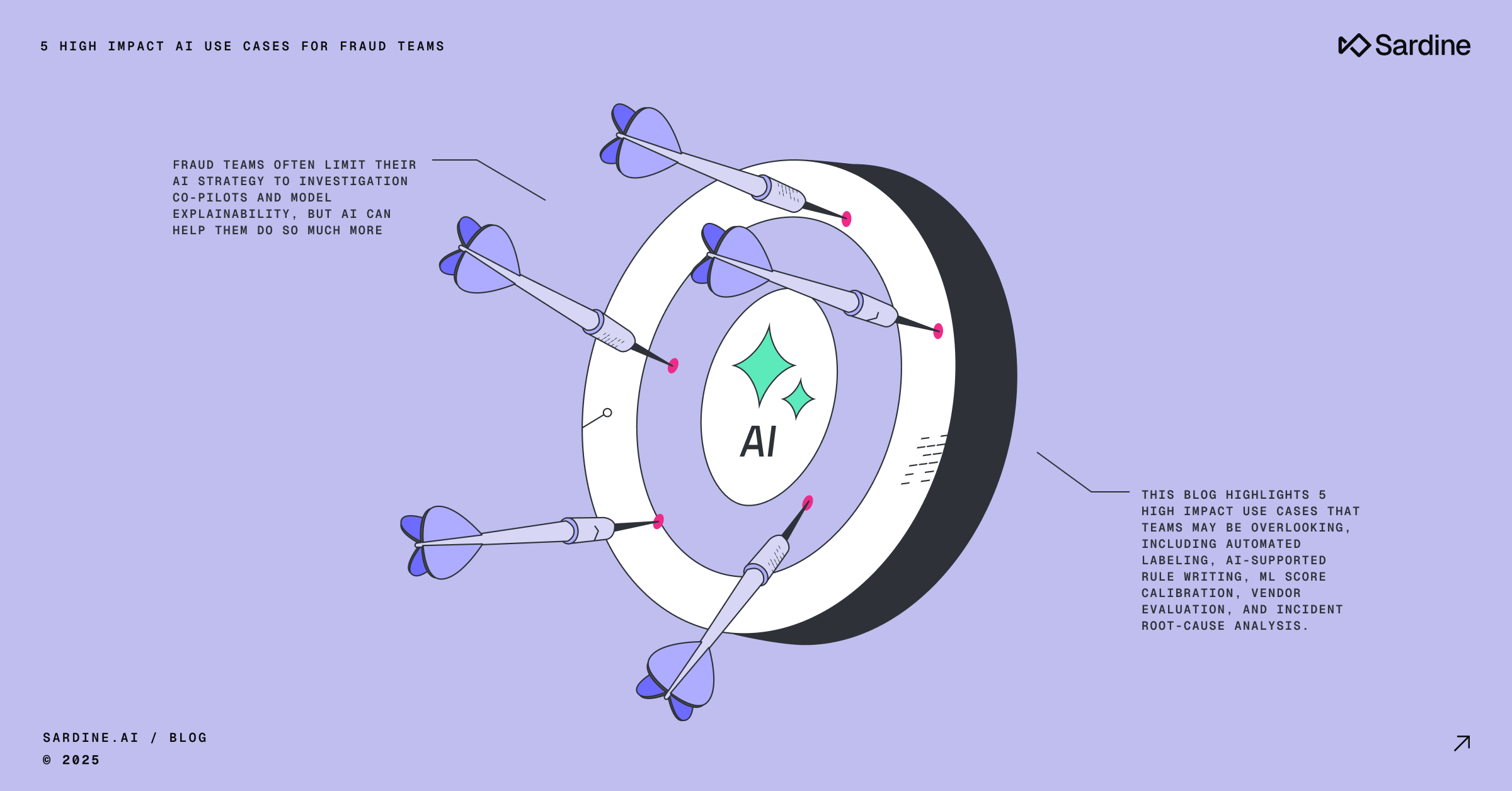Revenue Attach Rate: A New Metric for Fraud ROI Calculation
Revenue Attach Rate (RAR) Is the KPI that fixes hidden bugs in your product's ARPU (average revenue per user).
Product leaders measure customer conversion and product attach rate. Did the user come through their conversion funnel, try the product, and then continue to use it?
The Fraud Squad’s Budget Battle
As a fraud manager, you're fighting an uphill battle.
Your team is essential to the company's health, yet you're often the last to receive budget and resources. Why? Because it's hard to quantify the value you bring.
You prevent losses, but how do you measure something that didn't happen? It’s much easier to prove a fraud control caused a lost sale, than it is to prove that the sale would have later become a chargeback.
This revenue leakage shows up as abstract financial costs like
- Chargebacks
- Declined transactions
- Fines from regulators
- Operational costs in compliance and fraud teams
This looks like the raw cost at the CFO level, and often only lands on the fraud squad’s desk if nobody else could figure out the cause.
We can connect these costs to the “Revenue Attach Rate.”
Introducing Revenue Attach Rate (RAR)
Revenue Attach Rate is a metric that tracks how much of a customer's initial revenue stays with your business over time. It's measured at intervals - typically 3, 6, and 12 months after acquisition.
Here's the key: Revenue Attach Rate doesn't just look at whether a customer is still active. It examines whether their revenue is "good" revenue.
- Are they still making legitimate purchases?
- Or did they suddenly spike money in and money out?
- Has the same device used to create this account created 100s of others to collect sign up bonuses?
- Are they using the product as intended?
- Buying products with low returns (e-commerce)
- Selling goods in a pattern consistent with good sellers (marketplaces)
- Transacting like a good user (Fintech) with regular card payments
Are they costing you money through chargebacks, returns, or operational overhead?
Tag the user, to their activity, to the cost of that activity over time. The equation looks like this:

How Revenue Attach Rate Differs from Standard Product Metrics
Most good product businesses have KPIs that help to understand how many customers generate revenue daily, weekly, or monthly.
But they're missing something.
- Not all customers are good.
- Not all transactions are good.
- Not all revenue is good.
In fact, some customers are criminals, stolen identities, or worse, pretending to be a legitimate company but secretly an arm of a sanctioned country's government (like Russia or Iran).
Let's compare RAR to some common product metrics:
- Customer Acquisition Cost (CAC): This tells you how much you spent to acquire a customer. But it doesn't tell you if that customer was worth acquiring.
- Lifetime Value (LTV): This projects how much revenue a customer will generate. But it often fails to account for the costs associated with bad actors.
- Product Attach Rate: This shows how many customers are using your product. But it doesn't distinguish between legitimate users and those exploiting your system.
- Conversion Rate: This measures how many visitors become customers. But it doesn't consider the quality of those conversions.
RAR fills these gaps. It shows you which customers are genuinely valuable over time, helping you distinguish between growth that strengthens your business and growth that puts it at risk.
Real-World RAR Scenarios
E-commerce
An online retailer sees a spike in new customers. Traditional metrics show growth. But RAR reveals that 20% of these new accounts are placing orders and filing chargebacks or making fraudulent returns. By tracking RAR, the company can ensure their marketing spend is much smarter. Only acquiring customers who are likely to attach. Fraud teams can use this conversation with marketing teams.
Fintech
A money transfer app boasts rising user numbers after heavy marketing spend. But RAR shows that a significant portion of new accounts are being used for a single transaction, then abandoned. This pattern, invisible to standard metrics, could indicate money laundering activity. Fraud losses show in poor unit economics, but RAR also helps qualify and track marketing spend.
SaaS
A software company celebrates high conversion rates on a new freemium offer. RAR, however, exposes that many of these "conversions" are fake accounts created to abuse the free tier, driving up costs without generating revenue. It can improve its marketing targetting with RAR.
Implementing Revenue Attach Rate (RAR) in Your Organization
To start using RAR:
- Define what "good revenue" means for your business. Is it repeat purchases? Sustained subscription payments? Low return rates?
- Set up tracking for customer revenue over time. You'll need to connect data from sales, product usage, and customer service.
- Establish RAR benchmarks. What's a healthy RAR for your industry and business model?
- Integrate RAR into your fraud detection systems. Use it to flag suspicious patterns early.
- Collaborate with product and marketing teams. RAR can inform customer acquisition strategies and product development.
The Future of Fraud Prevention with RAR
As RAR adoption grows, we can expect:
- More sophisticated fraud prediction models, using RAR data to identify risky customers before they cause damage.
- Closer integration of fraud prevention into product design, with RAR serving as a key metric for feature development.
- Improved allocation of resources, as companies can better quantify the ROI of fraud prevention efforts.
- A shift in how businesses value growth, prioritizing "quality" acquisitions over raw numbers.
For fraud managers, RAR is more than a metric. It's a tool to quantify your impact, justify your budget, and elevate your role in the organization. By focusing on Revenue Attach Rate, you're not just preventing fraud - you're directly contributing to sustainable, profitable growth.



%20(1).png)





.png)

